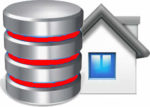A Guide to Using Stored Procedures, Functions, and Triggers in MySQL
Five years ago, the capabilities of MySQL were so far behind the
requirements of the majority of business users that its use in a business
environment was almost unheard of. Said businesses opted instead for the
commercial players in the field: Oracle, IBM, and Microsoft. But MySQL–being
free or extremely low cost–had a definite appeal for users who couldn’t afford a commercial relational database. As with most open source technologies, MySQLalso experienced rapid technological development, adding transactions, subqueries, and other features typically associated with its commercial counterparts. By the release of version 4.0, MySQL was being used by an
increasing number of high-profile companies, including Yahoo! and Google.
Now, with the 5.0 release, MySQL has crossed one of the last remaining
thresholds for enterprise credibility, observes Guy Harrison, author of “MySQL
Stored Procedure Programming” (O’Reilly) with Steven Feuerstein. “The ability to
create stored procedures, functions, triggers, and updateable views removes one
of the last remaining objections to using MySQL as a mainstream commercial
database,” Harrison says. For instance, he notes that prior to the introduction
of stored procedures, MySQL couldn’t claim Java J2EE certification, because the
certification tests included stored procedure routines. There are still many
features in the commercial databases that aren’t found in MySQL, Harrison
agrees, but these features are often superfluous to the needs of mainstream
database applications.
“We believe that MySQL will continue to grow in significance as the premier open
source RDBMS,” write Harrison and Feuerstein in the preface to the book, “And that stored programs–procedures, functions, and triggers–will play a major part in the MySQL success story.”
“MySQL Stored Procedure Programming” is rich in code examples and covers
everything from language basics and application building to advanced tuning and best practices. A companion web site contains thousands of lines of code that
readers can put to use immediately. The book consists of four main sections:
-Stored programming fundamentals: tutorial, using SQL in stored programs, and error handling
-Building MySQL stored programs: transactions, built-in functions, stored
functions, and triggers
-MySQL stored programs in applications: using stored programs with PHP, Perl,
Python, Java, and .NET (C# and VB.NET)
-Optimizing MySQL stored programs: security, basic and advanced SQL tuning,
optimization of stored program code, and programming best practices.
According to Harrison, the book is written “primarily for MySQL developers who are currently developing applications involving MySQL in other environments,
such as PHP, Python, Java, .NET, or Perl. Also MySQL administrators who might
want to use stored programs to develop utility programs.” He adds, “Stored
procedures are new to MySQL and offer new patterns for application development.
We hope to provide useful guidance so developers will use them appropriately and
effectively.”
Although few in the MySQL world have substantial experience with stored
procedures, Guy Harrison and Steven Feuerstein have decades of combined
experience. Harrison is Chief Architect of Database Solutions at Quest Software.
Feuerstein is the author of the classic reference for Oracle stored programming,
“Oracle PL/SQL Programming” (O’Reilly). Between them, they have authored a dozen
books.

